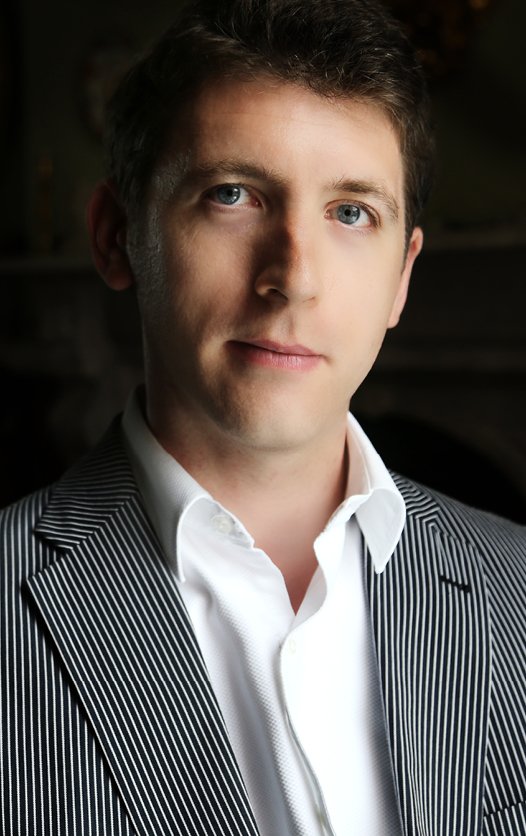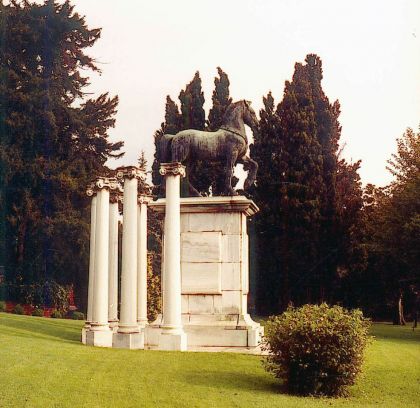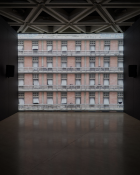© Mateusz Zahora, courtesy Istanbul Recitals
The third of the season’s Istanbul Recitals was given by the Irish pianist Finghin Collins at The Seed, the concert hall attached to the Sakıp Sabancı Museum in Emirgan, on December 20, 2019. After the previous recital, I frankly did not hold out much hope that the extremely high standard set by Nikolai Demidenko would be maintained. But I was wrong.
Finghin Collins (and by the way, Finghin is pronounced ‘Fineen’) first came to prominence when he won the Clara Haskil International Piano Competition in Switzerland in 1999. I usually give the musician concerned a bit of a run-down before launching into samples of their playing, but on this occasion a recording of his prize-winning performance (if that is indeed what we are hearing) is available. So here is Finghin Collins playing Mozart’s Piano Concerto in A major, K 414, with a sparse string accompaniment rather than a full orchestra: https://www.claves.ch/products/cd-9910
At the time, Der Bund wrote: ‘Collins’s playing was characterised by maturity and technical perfection, a delicate touch and clear articulation, and a wonderful balance between dramatic impetus and tranquil lyricism. It was impressive to see and hear how Collins integrated inner composure, precision of attack and musical reflection into his performance.’
I think they hit the nail on the head in that first sentence: ‘… a wonderful balance between dramatic impetus and tranquil lyricism’. It was the restraint underlying the emotional tautness that impressed me: like Andrew Tyson, who entertained us at The Seed in February last year, Finghin Collins has the gift of communicating passion without allowing himself more than the barest smidgeon of rubato. And if you wait for (or scroll on to) the piece following the Mozart in the above recording, you will hear him play Schumann’s Des Abends (from Fantasiestücke) with a fulsome legato that shows awareness of both the structure of the extra-long phrases and of the dramatic possibilities they offer at various points – with no compromises whatever to the rhythm.
But I have jumped the gun: to return to Finghin Collins’s career – and I will refrain from calling him Mr Collins as that appellation inevitably calls to mind the preposterous anti-hero of Jane Austen’s novel Pride and Prejudice – he received his musical education at the Royal Irish Academy of Music under the tutelage of John O’Conor, himself a pupil of Dieter Weber and Wilhelm Kempff. The fact that Collins’a pianistic lineage includes this latter musician might go some way towards explaining the balance he achieves between expressiveness and discipline: Kempff was praised for his ‘supreme integration of the spontaneous on the one hand and the rigorous on the other’.
The programme notes for the concert in Emirgan informed us that after completing his studies in Dublin, Finghin Collins attended the Geneva Conservatoire. I cannot help but wonder who his teachers were, and would guess that from them he received some further input from the German school of pianism. Another piece of information the notes contained was that he is the musical director of the New Ross Piano Festival (in County Wexford) and the Music for Galway Festival. I wonder whether that means their Midwinter Festival, which this year is to focus on Beethoven’s early piano works. Was it a coincidence that Finghin Collins’s recital in Istanbul included an early Beethoven piano sonata?
And indeed, it is with just such a work that the recital in Emirgan began – Beethoven’s Sonata No 5 in C minor. The first two things I noticed when the pianist got down to business were, firstly, his habit of looking upwards, and, secondly, the dramatic gestures he makes with his arms, especially before a recapitulation of the main theme. (If when directing his gaze at some distant point he is mentally visualising the coastal scenery of County Galway, I cannot say I blame him – memories of Clifden come to mind, and the bar where my companions and I drank Guinness before dancing down the road to our holiday cottage under a skyful of brilliant orbs.) Will he overdo the stargazing, and fail to notice that there is a car coming? I wondered. But he did not. The control over the pianissimo passages in the slow movement was relentless (and I mean that as a compliment), but the tone none the less sweet – another feature of Wilhelm Kempff’s playing, by the way. I feel duty bound to record that I could have done with about 20 percent less pedalling. At the same time, however, one cannot deny a pianist of such admirable self-discipline his little indulgences.
Here is the sonata played by the Hungarian-Jewish pianist Annie Fischer (1914–95). Apparently, in 1941 she and her husband decided to leave Hungary and spend the next five years in Sweden. This was a good move on her part as anti-Semitism was on the rise in Hungary even before the Germans invaded in 1944: in 1941 the government deported approximately 20,000 non-Hungarian Jews to Ukraine, where they were murdered by the Einsatzgruppen. The Encyclopedia Britannica website has the following to say about Annie Fischer: ‘Her blend of temperamental, explosive playing combined with sensitivity was reminiscent of the tradition of the Romantic era.’ Personally, I think a little ‘iron in the soul’ is no bad thing if one wants to play Beethoven with the requisite degree of oomph, and in this performance she seems to have been feeling particularly jagged – those arpeggios are sharp enough to open a can of chilli pickle with:
The next piece on Finghin Collins’s programme on December 20 was Beethoven’s Sonata No 23 in F minor, the Appassionata, written at some time between the years 1804 and 1806, and dedicated to Count von Brunsvik. This is definitely a make-or-break piece for pianists – the torture never stops throughout the whole of the first movement. Those repeated notes – ouch! Here is a description of the work by Peter Gutmann from the Classical Notes website. This is followed by some interesting observations on Beethoven’s attitude to pianos in general and on his own playing, plus a critique of various famous pianists’ recordings of the work: http://www.classicalnotes.net/classics3/appassionata.html
These notes observe that the recording of one of Sviatoslav Richter’s performances of the Appassionata at the Carnegie Hall in 1960 is ‘a letdown’ as he was ‘nervous and overmedicated’. In Leningrad that same year, however, he was obviously much more relaxed, less woozy, and therefore less inclined to feel compunction about yanking all the stops out. I would concur with Mr Gutmann’s view that the performances Richter gave in Moscow in 1960 have ‘seething tension, colossal dynamics, massive power and explosive climaxes’, and this one is no less of a scorcher:
Perhaps, when Beethoven wrote this sonata for Count von Brunsvik, he was remembering, admitting to – and honouring – his unrequited love for the Count’s sister Josephine, whom he had met when she came to Vienna from Hungary at the age of 20. He is known to have written at least 15 love letters to her. The story is told here on the Classic FM website. Warning: it all ends unhappily for everyone (sigh): https://www.classicfm.com/composers/beethoven/guides/beethoven-josephine-brunsvik/
In Finghin Collins’s first movement there was no lack of drama: the opening arpeggios were powerfully played, and the contrast with the more subdued, darker passages well managed. I was soon made aware of something I had suspected earlier – that this pianist has an exceptionally acute sense of timing that allows him to create an intense emotional overlay over a phrase which is, however, played almost entirely without rubato. As for the technique – well, anyone who can play such rapid-fire stuff with absolute evenness has my respect. Accordingly, I will refrain from making any criticism of the over-pedalling; after all, it was not intrusive.
His choice of tempo for the second movement was entirely appropriate, instantly setting the new mood – something not easy to achieve after the befuddling haste of the first. The gradations of tone were particularly pleasing – in my view, this is the mark of a pianist of exceptional quality. I have to say that at times I found the emphasis given to the middle parts a trifle excessive, but the overall effect was entirely satisfying.
The third movement is, like the first, somewhat technically demanding (to put it mildly), and ends with a rhythmic upgrade to a brutal, breakneck pace. The agony betrayed by the pianist’s facial expressions seemed to have nothing to do with the physical demands of the piece, however: he played it with unerring accuracy. A most creditworthy showing, I thought. It occurred to me that this pianist ought to be more famous than he is.
This concluded the first half – and so to the terrace outside the concert hall, where I renewed my acquaintance with the trees in the garden of the Sakıp Sabancı Museum and paced up and down to shake off the lethargy induced by pre-concert indulgence in milk pudding with ice cream in the café next door.
Filing into the auditorium for the second half, I wondered whether Schubert’s Sonata in A major, D959, would be a damp squib after the Beethoven – like a tired salad with droopy lettuce after a tasty soup. But this was a remarkable performance. The sweetness of temperament that the work evinces (with the exception of a section of the second movement where the placid mood is suddenly infused with aggro) was captured with seemingly effortless facility. The pianist’s emotionality came over even more strongly than it had done in the Appassionata – aided, of course, by Schubert’s overtly sanguine world view. The lyrical, rather naif second theme of the first movement was played in a mouth-wateringly limpid legato, and the ending was a triumph of timing. The lethargy I had felt earlier was entirely dispelled: I felt energised and wide awake, and it was – I swear to you – definitely not due to the Turkish coffee that had followed the milk pudding.
The second movement, with its surprise forte passages, has an improvised feel to it – you never know where it is going to take you next. This mood was well captured, and when the swan that has risen up from the river and flapped angrily about your head finally returns to calmer waters, the playing had such sensitivity that I compared it favourably to that of Richter, the pianist who first brought these sonatas into the repertoire.
The third movement (a scherzo) requires altogether different treatment, and Finghin Collins showed that he understood this completely by adopting a lighter, fluffier tone that would have been entirely appropriate to French music – Ravel, perhaps. In the finale, with its song-like main theme, there were some of those dramatic moments that Collins so relishes; not a single drop of the tension was poured away untasted. This is not to say that there was any relaxation of discipline: not once were the bounds of rhythmic propriety overstepped.
The following performance of Schubert’s Sonata in A major, D959, is by the Romanian pianist Radu Lupu. I remember him winning the Leeds competition in 1969. At that time, he had a mop of long hair that flopped about as he played. No floppiness here, however: true to his background, which includes tuition from both Heinrich and Stanislav Neuhaus at the Moscow Conservatoire, he allows himself only a modest portion of rubato in the first few bars, and thus avoids putting a brake on their impetus. As another plus, his scherzo (this starts at 21:42) is delightfully insouciant:
For his encore, Finghin Collins played us John Field’s Nocturne No 10 as a way of showcasing the work of this Irish native son (1782–1837) who is credited with inventing the nocturne, a form that was then taken up by Chopin. Here is a link to an Encyclopedia Britannica article on Field’s life – an interesting one that ended in Russia:
https://www.britannica.com/biography/John-Field-Irish-composer
What can one possibly say about Finghin Collins’s recital at The Seed on December 20 other than that he excelled himself? I am grateful to have discovered a musician who deserves to have his name in lights from one side of the Bosphorus to the other, and the organisers of the Istanbul Recitals are to be congratulated on having brought off the near-impossible feat of arranging two consecutive recitals of superb quality.
The next concert in the series, scheduled for January 18, is to be given by the Armenian cellist Alexander Chaushian, who I believe is currently professor of cello at the Royal College of Music. As a taster, here is a video of a very young Chaushian playing the last movement of Haydn’s second concerto:













